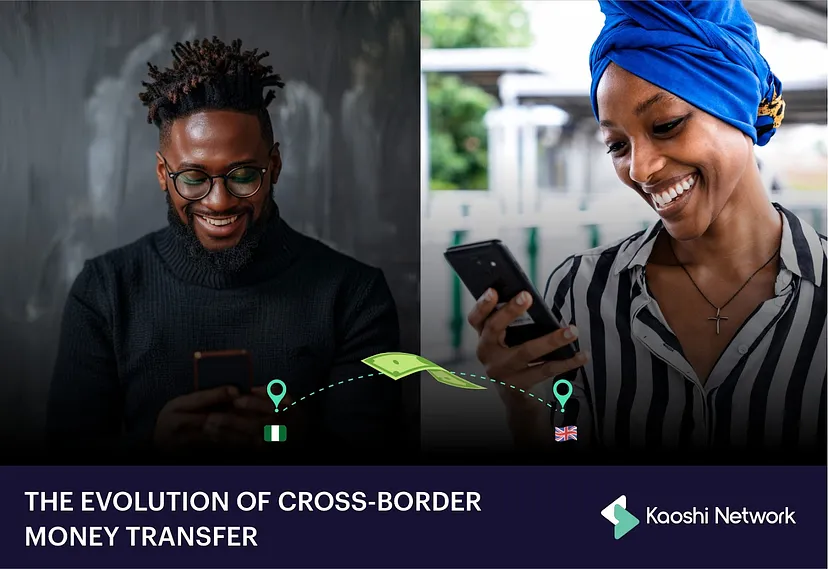
Imagine how easy it has become to send money and complete transactions across borders in today’s world. What if we told you, it wasn’t always like that? Generally, exchange of money and monetary equivalents was never this easy and it is impossible to discuss the history of cross-border payments without highlighting the origin of money. They go hand in hand. The world of finance and financial exchange has undergone leaps and bounds to get to this point, and it is only still growing. What once took weeks or even months to complete can now be done in seconds by a couple of clicks.
In this article, we’ll see how far the industry has come from inception to the present day. Before we get into that, let us look at why there had to be constant change.
Disadvantages of Traditional Cross-Border Transactions
- Time: Owing to changes in time zones and different banking hours and systems, there is a huge loss in synchronization between parties that wish to transact. Transactions drag and take twice, sometimes three times as long also, to sort out issues that could occur through error in human input and calculations.
- Lack of proper transparency: Because there was no real time communication between parties, there was a lack of transparency as regards the fees, exchange rates and amounts. Errors could also occur that would render the transaction wrong. Often, the fees being charged may not be seen by the parties.
- Lack of security: A lot of the security measures put in place to ensure these transactions are proper were not always there, so they were always open to vulnerabilities. No governing bodies to check and control the payments meant there was a possibility of theft.
- Uncertainty over completed transactions and rates: Due to the time taken, parties were always unsure of rates. Rates can be quite volatile and because of delays, parties may not receive the initial agreed value.
THE BARTER SYSTEM
There has always been a need to exchange goods and/or services. The first was the barter system. Popularly known as trade by barter, this allowed people to get their hands on goods/services by exchanging it for something they had. So, let’s say Person A wanted Gold but had a lot of silk and Person B wanted a lot of silk but had only Gold, they would find an appropriate metric that would let them exchange these goods. This however resulted in parties having to travel long distances even across their regions to deliver these items. This was not only risky but time consuming because some of the journeys could take days to complete and they could be stolen along the way.
The Barter system served its purpose the best it could but there needed to be a safer and more stable way to conduct business. This brought about the emergence of metals converted into rudimentary coins, each with a marked value that would enable exchange. This alleviated the burden of carrying heavy duty goods across borders but didn’t stop the physical exchange of the coins.
THE USE OF NOTES AND THE HAWALA SYSTEM
After a while of using coins, other forms of currency came onto the scene. Notes were introduced to step up from the use of coins and metals that could be uncomfortable sometimes.
People called money changers were present in different regions and carried out conversion from foreign to local currency. They would receive the foreign currencies from the foreigners who brought it and exchange it for local ones that helped buying and selling of goods in the market. This was still heavily reliant on physical movement. However, in the 18th century, something called a hawala system emerged. In the hawala system, currency didn’t need to move physically but passed through a trusted system of people who brokered it in different regions to send money back home. The hawala system is still used in some places till date. The people involved are called Hawaladars.
BANKING AND WIRE TRANSFERS
With the rise of industrialization came the need for a more structured and organized method of sending money across regions. In the 19th century, Western Union, formerly the telegraph, was born and started what is called a “wire” transfer using telegraph lines. This got its name due to the nature of the transfer. A sender would deposit money in an office for the person handling it and the person would send a message and a “wire” to another office where the receiver can pick it up. You could imagine how much of an improvement this was from using just notes and bills. This marked a major shift in the world of cross-border payments as speed and reliability greatly increased. Till today, remittance companies have agents around the world where cash pickup still happens.
Shortly after, banks began to adopt this method and offer this service to people like merchants and traders that needed to get funds across regions. This helped greatly and reduced the risk associated with the physical transport of said funds, as it was a bottleneck. They did this by setting up the EFT (Electronic Funds Transfer) and later moved on to SWIFT (Society for Worldwide Interbank Financial Telecommunication) network in 1973 which enabled transactions to happen securely. It provided a secure, standardized method for banks to send payment instructions to each other, reducing errors and delays. This sped up the process of funds transfer significantly.
MOBILE MONEY TRANSFERS AND CROSS-BORDER FINTECHS
With the rise of the internet in the 2000s, came the rise of Internet Banking or E-Banking. The times where you had to go physically to change money even at banks has come to an end. Now, with the click of a button, a recipient can get funds deposited in their account from anywhere across the globe. Banks have come up with mobile money transfers — financial transactions and services that can be carried out using a mobile device such as a mobile phone or tablet — enabled by software applications.This bypasses traditional banking and now people can send and receive money in the comfort of their homes with little to no hassle.
Now, Fintechs are the game-changers. Not only do they solve a lot of the problems that the traditional banking system couldn’t solve, but they also do it in little to no time and with a very transparent system and mode of operation. At Kaoshi Network, we offer you seamless transactions from Africa to over 14 countries and vice versa. That is not all, at Kaoshi Network, we let you set your own rates. That means that you are in control of the terms of your transaction.
- Time? By using Kaoshi Network, you do not have to worry about time delays. At Kaoshi Network, we employ a system that lets you access a wealth of remittance services, and the KaoshiPayTM widget™ means that you do not need to leave our site, you can initiate and complete them in a single instance.
- Lack of proper transparency? Transactions on Kaoshi Network are not human dependent and so there is no error in calculating fees and rates.
- Lack of security? At Kaoshi Network, we are compliant with security guidelines regulating international money transfer and are registered with Fintrac and Fincen. We do this to ensure the security of our customers’ funds.
- Uncertainty over completed transactions and rates? By using our service, you have your account which keeps you up to date on the status of your transaction. As stated earlier, you also get to set your own rates and be in control of your money from start to finish. We also have a very able and robust customer care service team that will guide you through everything you need.
There is no doubt that we have come a long way, from the hassles and insecurity of the barter system to the rise and dominance of fintechs, this is a testament to how much the demands of the world have shifted. Everything is now faster, more secure and more transparent. Looking into the future, there is the rise of cryptocurrencies that would even make transactions better. Wow!
At Kaoshi Network, we are proud to be a part of this evolution. By offering you the best services, we ensure that you are not left behind in what is an ever changing and demanding world of finance and financial needs. Whether you’re supporting family members abroad or managing international transactions, we are committed to making your cross-border transfers as seamless and efficient as possible.




